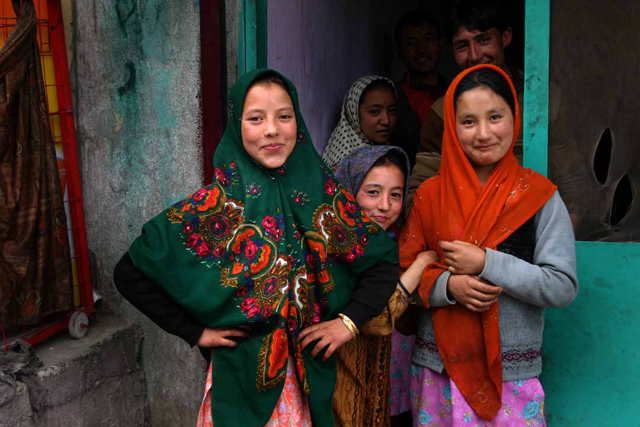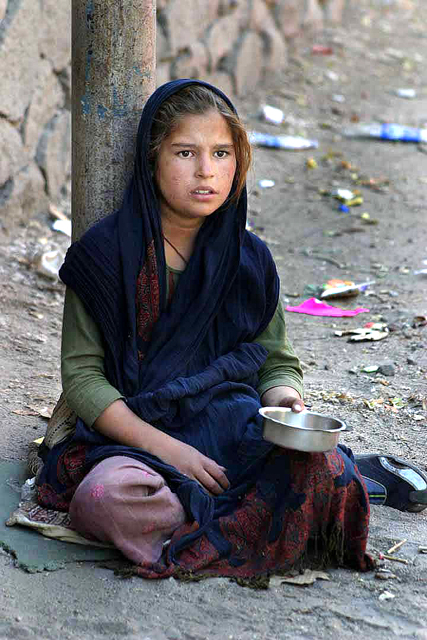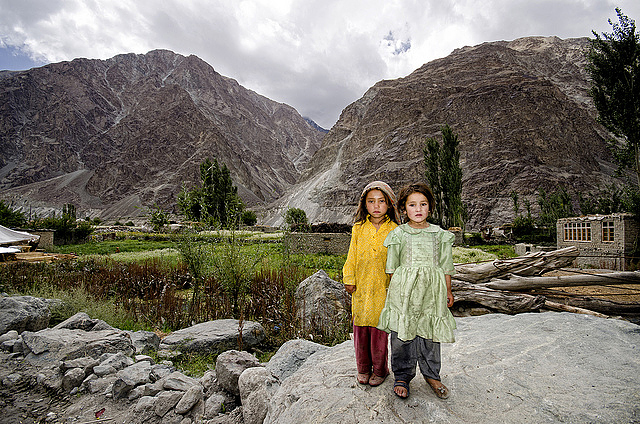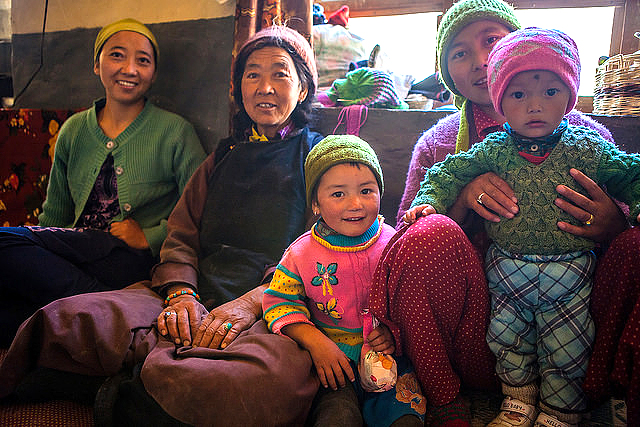Ladakhi adolescents are often left in limbo between desires for modernity and tensions about their traditional moral values. Many desire sexual freedom but they are also torn by loyalty to their society and their culture. A journal article by Jennifer Aengst explores the tensions handled by young Ladakhis as they seek to modernize in a conservative society.

Adult Ladakhis focus much of their concern for the future of their society on the young people, Aengst writes. A special concern is that many of them migrate, at least temporarily, to big cities in India to get an education, which is leading them to become alienated from their cultural values. That migration, some adults feel, is particularly harmful to Ladakhi girls.
Furthermore, the lives of Ladakhi adolescents are shaped by their access to motor vehicles, which mark the owners as modern individuals. Motorcycles and cars allow young people to go outside the city of Leh at night in order to attend secret parties, and, more generally, to attain the privacy they desire. Youths can meet in forests in private or they can go to the homes of people when they know that the parents are not going to be there. Sometimes they meet in restaurants when they are sure that no one will see them.

Electronic technologies such as cell phones, the Internet, text messaging, and blogs also foster communication among young people. Text messages in particular promote the exchange of flirting messages, allow parties to be arranged and encourage dating. But access to these technologies differs—young people from urban middle and upper class families have cell phones, cars, and motorcycles but the poor do not.
Upper and middle class girls, particularly the ones from Buddhist families, have gained increased mobility and freedom. They can congregate in public places, stay out later at night, and socialize openly with boys. Couples will occasionally walk together in Leh openly holding hands, though such public displays of affection are rare. But these practices by the young people—cars, texting, dating—do underscore a growing resistance by the youth to the traditional authority structures in Ladakh. A young couple holding hands in public is a not-so-subtle act of rebellion, of challenge to prevailing norms.

As another sign of rebellion, urban girls are wearing more revealing clothing such as jeans rather than the traditional Ladakhi neck-to-ankle heavy woolen dresses worn by older women. Ladakhi parents traditionally arranged marriages for their young people but adolescents are now expressing their desires for marriages based on love relationships. They have more accepting views of public displays of affection and premarital sex.
Their dating is generally not open, however—it is done in a somewhat more subtle fashion, of boys visiting girls in ways that won’t be seen or noticed by anyone. Dating is considered by Buddhist women as “dirty” and it reflects poorly on the young people doing it; it will give them a bad reputation and it will also affect the reputations of their families. Dating is more possible in summer when the presence of tourists can mask the activities of couples and it is easier to meet in outdoor locations.

In the more remote villages, people condemn the youth when they intentionally walk about in order to see and be seen. Girls who openly do so, called “roaming,” are assumed to be sexually active. A Muslim village girl explained to the author that “it’s not okay to roam with boys even during the day.” If a girl gets a bad reputation, it will have an impact on her potential for a good marriage.
Despite the increasingly normal practice of dating, arranged marriages are still common. In some cases, girls may reject potential suitors that don’t please them, and they may be able to manipulate the situation so that their parents will arrange a meeting with someone they are already secretly dating. If those alternatives don’t work out, the couple can elope—or they can orchestrate a faked kidnapping marriage.
Intermarriages between Buddhists and Muslims have become increasingly controversial—the intermarrying couple usually needs to elope and to try fleeing from Ladakh. Leaders in the two religious communities will spring into action when a couple has eloped, asking the army and the police to close roads, to help track down the couple and to bring them back. If they are caught, they are forcefully returned to their families and compelled to marry someone of the proper religion. If they escape successfully, they will normally flee to one of the big cities in India where they can more successfully avoid being captured.

As part of this conservative backlash, some Buddhist young people see a need to protect the traditional family values of Ladakh. They are starting to police the behaviors of other young Ladakhis with a movement spearheaded by young men called the Youth Wing of the Ladakh Buddhist Association. Members of the Youth Wing close bars, intervene with inter-religious couples, punish people involved in prostitution, and try to prevent extramarital affairs. They attempt to protect children from getting into drugs, try to settle disputes, and in general police what they view as the proper morals of the Buddhist community.
The author quotes a Buddhist woman speaking approvingly of the Youth Wing. With help from the police, it broke up a flirting relationship between a girl and a boy. “It was the right thing to do,” she said (p.641). The Youth Wing is maintaining the moral standards of Ladakh, people feel, protecting the region from corrupting outside forces and preserving Ladakhi culture in the process. For their part, many young people, particularly the ones who have lived outside Ladakh, resent having to hide their dating—but they are realistic enough to try and conceal activities that are so normal elsewhere.

The author concludes that the youth culture in Ladakh is becoming increasingly visible—dating is occurring. The adolescents ascribe a lot of their new-found values to their experiences in New Delhi and other major Indian cities, where they can be part of a much more relaxed youth culture. There they can go to discos, organize picnics, and dance. They can have a lot more fun in the big city that they can in remote Ladakh.
But the Ladakhi young people are troubled. Activities that mark them as modern—using electronic devices, wearing fashionable clothing, and dating—appear to conflict with the traditional culture, to which they also feel they should be loyal. There are no easy solutions.
Aengst, Jennifer. 2014. “Adolescent Movements: Dating, Elopements, and Youth Policing in Ladakh, India.” Ethnos 79 (5): 630-649.